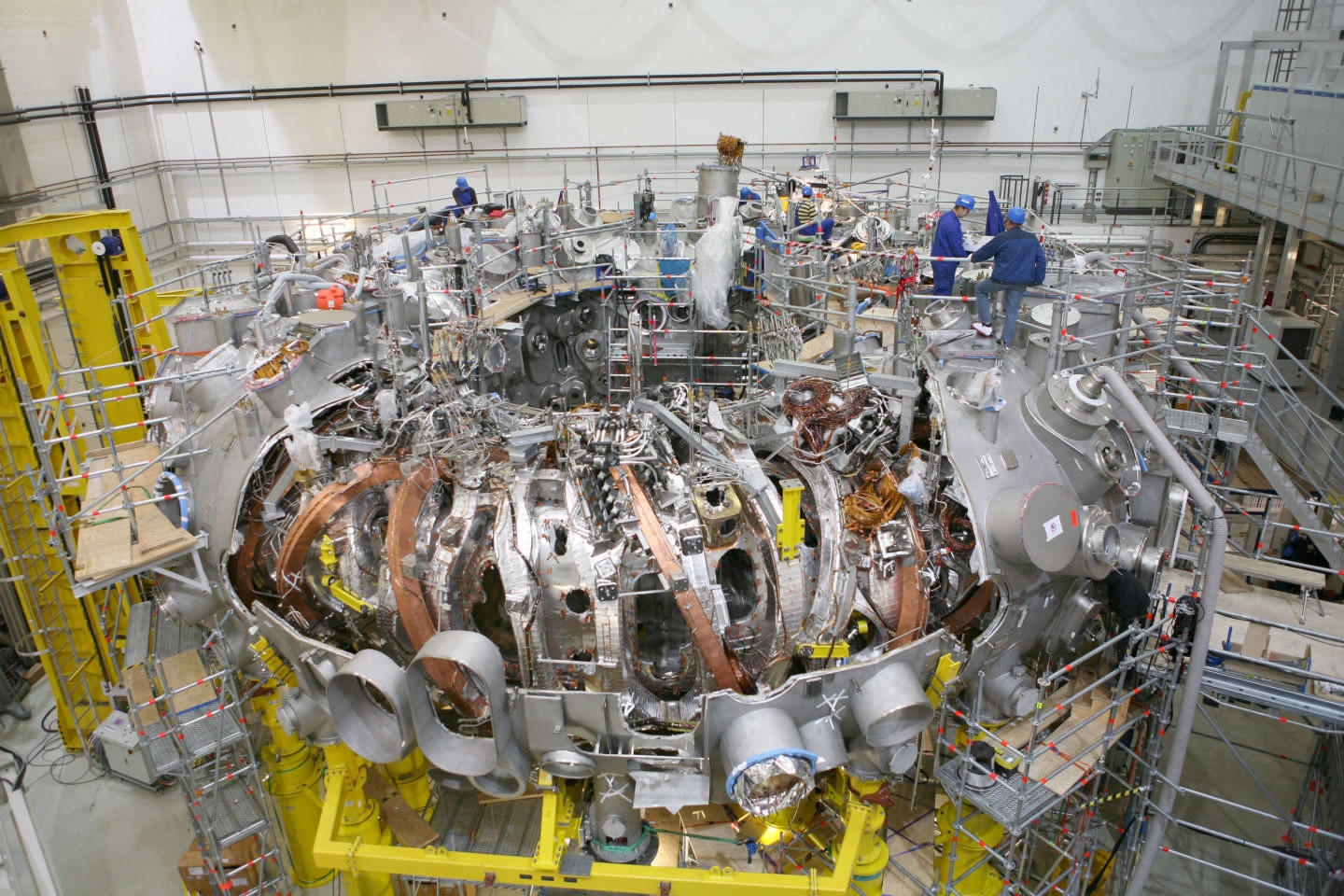
Tech & Sci
14:56, 05-Jul-2017
China to work with Japan on magnetic fusion device

China has reached an agreement with Japan to build its first quasi-axisymmetric stellarator, the latest move to explore nuclear energy.
Southwest Jiaotong University (STU) and National Institute for Fusion Science of Japan Monday signed a cooperation agreement in Chengdu, capital of Southwest China's Sichuan Province, read a statement sent by the university to the Global Times on Tuesday.
A working staffer at the university surnamed Chen, who is engaged with the project, told the Global Times that "the two sides are still negotiating the implementation of the project."

The process of fusion explained in a simplified illustration /American Security Project Photo
The process of fusion explained in a simplified illustration /American Security Project Photo
Nuclear fusion, which powers the sun and all stars in the universe, is regarded as the alternative way to provide sustainable, zero-emission and relatively cheap power to grids.
Stellarators and tokamaks are the world's two most important devices to sustain nuclear fusion reactions within a magnetic confinement, as well as the two fusion devices that are most likely to be viable power sources.

Tokamak and stellarator. China had its first tokamak in 2007. /Science Photo
Tokamak and stellarator. China had its first tokamak in 2007. /Science Photo

China's EAST, or Experimental and Advanced Superconducting Tokamak, was the first superconducting tokamak to be designed and built by China in 2007, costing 200 million yuan (roughly 67 million US dollars). /Xinhua Photo
China's EAST, or Experimental and Advanced Superconducting Tokamak, was the first superconducting tokamak to be designed and built by China in 2007, costing 200 million yuan (roughly 67 million US dollars). /Xinhua Photo
According to the statement, a stellarator, which imitates the functions of a fixed star, requires more complex techniques to build than a tokamak, but can avoid large ruptures caused by plasma currents.
Tang Chuanxiang, director of the Department of Engineering Physics of Tsinghua University, told the Global Times on Tuesday that "China has achieved much progress in tokamak research, but is still at an early stage in stellarator research."
China first initiated studies into stellarator technology in the 1970s.

Germany's stellarator — Wendelstein 7-X (W7-X) reactor — is an experimental stellarator built in Greifswald, Germany, by the Max Planck Institute of Plasma Physics (IPP) in 2015. / Max Planck Institute for Plasma Physics Photo
Germany's stellarator — Wendelstein 7-X (W7-X) reactor — is an experimental stellarator built in Greifswald, Germany, by the Max Planck Institute of Plasma Physics (IPP) in 2015. / Max Planck Institute for Plasma Physics Photo
It is now one of the seven members of the International Thermonuclear Experimental Reactor plan, together with the US and Russia, to build the world's first tokamak fusion reactor, the statement said, adding that cooperation between China and Japan would help create conditions for China to build large stellarator devices in the future.
SJU's move came less than one month after the University of South China (USC) signed a memorandum of understanding with Australian National University (ANU) with the ANU agreeing to provide the USC with its plasma stellarator device, hopefully by the end of this year, the Xinhua News Agency reported.
Working under the memorandum, China and Australia aim to jointly develop a future energy source for the world, making fusion a viable baseload power source by 2050.
(Source: Global Times)

SITEMAP
Copyright © 2018 CGTN. Beijing ICP prepared NO.16065310-3
Copyright © 2018 CGTN. Beijing ICP prepared NO.16065310-3